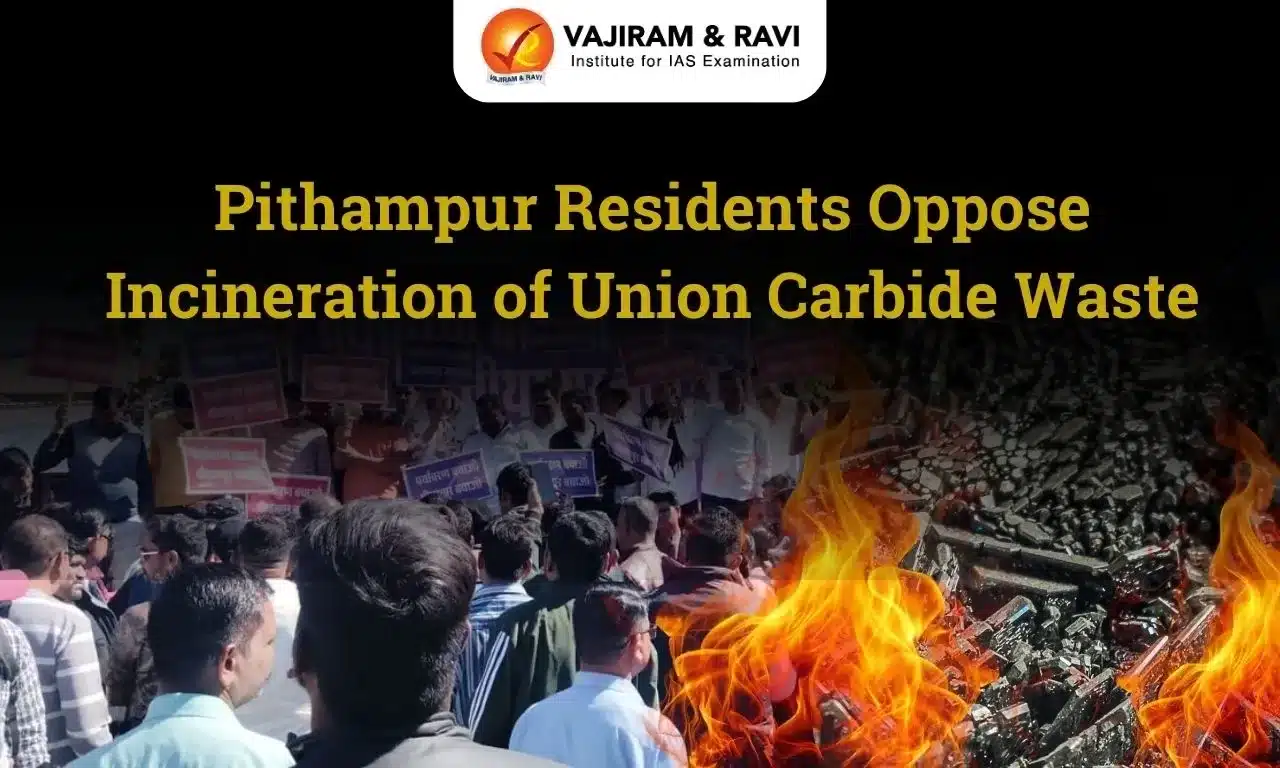About Incineration:
- Incineration is the process of burning hazardous materials at temperatures high enough to destroy contaminants.
- Incineration is conducted in an “incinerator,” which is a type of furnace designed for burning hazardous materials in a combustion chamber.
- Many different types of hazardous materials can be treated by incineration, including soil, sludge, liquids, and gases.
- Although it destroys many kinds of harmful chemicals, such as solvents, PCBs (polychlorinated biphenyls), and pesticides, incineration does not destroy metals, such as lead and chromium.
- Waste incineration can be a form of waste-to-energy because the heat generated during combustion can be used to create electricity.
- How Does It Work?
- Hazardous materials must be excavated or pumped into containers before incineration.
- They may require further preparation, such as grinding or removing large rocks and debris, or removing excess water.
- The materials are then placed in the combustion chamber of an incinerator where they are heated to an extremely high temperature for a specified period of time.
- The temperature and length of time depend on the types of wastes and contaminants present.
- Air or pure oxygen may be added to the chamber to supply the oxygen needed for burning.
- As the wastes heat up, the contaminants volatilize (change into gases), and most are destroyed.
- Gases that are not destroyed pass through a secondary combustion chamber for further heating and destruction.
- The resulting gases then pass through air pollution control equipment, which removes particulate matter (extremely small particles or liquid droplets) and “acid gases.”
Q1: What is combustion?
Combustion is a chemical process in which a substance reacts rapidly with oxygen and gives off heat. The original substance is called the fuel, and the source of oxygen is called the oxidizer.
Source: FPJ
Last updated on December, 2025
→ Check out the latest UPSC Syllabus 2026 here.
→ Join Vajiram & Ravi’s Interview Guidance Programme for expert help to crack your final UPSC stage.
→ UPSC Mains Result 2025 is now out.
→ UPSC Notification 2026 is scheduled to be released on January 14, 2026.
→ UPSC Calendar 2026 is released on 15th May, 2025.
→ The UPSC Vacancy 2025 were released 1129, out of which 979 were for UPSC CSE and remaining 150 are for UPSC IFoS.
→ UPSC Prelims 2026 will be conducted on 24th May, 2026 & UPSC Mains 2026 will be conducted on 21st August 2026.
→ The UPSC Selection Process is of 3 stages-Prelims, Mains and Interview.
→ UPSC Result 2024 is released with latest UPSC Marksheet 2024. Check Now!
→ UPSC Prelims Result 2025 is out now for the CSE held on 25 May 2025.
→ UPSC Toppers List 2024 is released now. Shakti Dubey is UPSC AIR 1 2024 Topper.
→ UPSC Prelims Question Paper 2025 and Unofficial Prelims Answer Key 2025 are available now.
→ UPSC Mains Question Paper 2025 is out for Essay, GS 1, 2, 3 & GS 4.
→ UPSC Mains Indian Language Question Paper 2025 is now out.
→ UPSC Mains Optional Question Paper 2025 is now out.
→ Also check Best IAS Coaching in Delhi
Tags: iIncineration prelims articles upsc current affairs upsc prelims current affairs

















